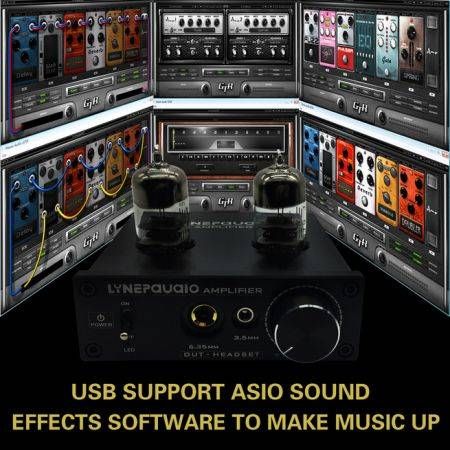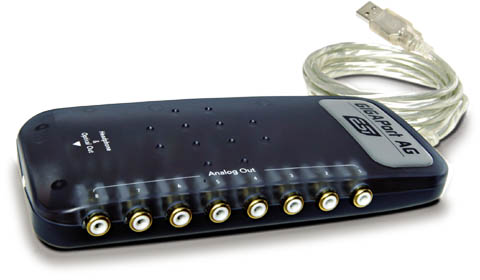Asio Usb Sound Card
Most current audio applications need an audio card that will provide low latency along with ASIO support. New vegas gas mask. While most currently sold motherboards come with 7.1 Integrated Audio chipsets, they don't provide the performance and flexibility that many professional users such as musicians or radio producers want, especially when the ASIO driver is an absolute must. Recently, USB audio cards have become very popular among users for their portability and flexibility being available for both the PC and MAC environments.Today, we are going to review ESI's Maya44 USB sound card, a product that is 'famous' for its performance/price ratio among enthusiast Audio producers.- ESI Maya44 USB Sound cardThe MAYA44 USB is the ideal external USB audio solution for your notebook or desktop computer. With a simple USB connection, the MAYA44USB instantly adds a high fidelity, multi-connection audio interface to your PC. The MAYA44 USB is equipped with 4 output channels (via 3.5mm RCA jacks) and 4 input channels (via 3.5mm RCA jacks) along with S/PDIF Optical Digital Outputs. Headphone output (combo jack with Optical output) is also included to complete this fully functional portable audio solution.For DJs, the MAYA44 USB makes a great companion for ASIO based DJ software like BPM studio. The MAYA44 USB also plays back multiple tracks of audio from popular software synthesizers and samplers providing 4 individual outputs and inputs via the ASIO driver.For Professional Musicians, like the original MAYA44 PCI card, the MAYA44 USB is the perfect match for music productions software like CUBASE, NUENDO, REACTOR, REASON, Sonar 2.2 and LOGIC.The MAYA44 USB is the ideal portable audio solution for audiophiles, musicians, and DJs.

MAYA 44USB's compact design and the USB connectivity lets you take your high-quality, multi-channel audio projects on the road as convenient as your desktop PC.In its compact case, the MAYA44 USB provides 4 analog input and 4 analog output channels with RCA connectors and a combined optical S/PDIF digital output / stereo headphone output.
What's USB, synchronous and asynchronous, implicit feedback, WDM and CoreAudio?' Universal Serial Bus' (USB) is an external peripheral interface standard for data transmission.

USB 1.1 and USB 2.0 'full speed' operate at 12Mbps and provides up to 8 uncompressed audio channels at 48kHz / 16bit.USB2.0 'high speed' (480Mbps), USB3.0 'superspeed' (5Gbps), USB3.1 'superspeed+' (10Gbps) and USB3.2 (20Gbps) offer higher samplerates, bitrates, lower latency and more audio channels.So called synchronous designs derive the samplerates from the USB clock. This increases the compatibility.

It works with any smartphone etc. On the downside the audio samplerate contains more jitter, as there's on-purpose jitter on the USB clock from 'clock spreading' technologies.Asynchronous designs use samplerates from crystals, external masterclocks or audio PLLs.
If not in implicit mode, an additional USB feedback endpoint reports the rounded current samplerate, relative to the USB frame clock.Implicit feedback means the driver uses the number of sample frames in the input stream's packets to construct the packets for output streams. No feedback endpoint is required and perfect syncronisation is ensured.
Asio Sound Card Driver Download
This had always been the concept of Ploytec drivers.Windows WDM 'Windows Driver Model' audio is a basic standard, even supported by Windows Mediaplayer.Mac OS X and iOS provide an advanced Audio and MIDI system called Core Audio, being part of the operating system. Many USB audio interfaces are 'class compliant', work out of the box on the Mac and don't need additional drivers.Still, for interfaces needing a driver, Ploytec supplies a USB Audio HAL-plugin driver for Mac OS X.low latency. What's the difference to freeware drivers?The Ploytec USB Audio driver works in kernel mode without using the Windows usbaudio.sys. This means direct access to the hardware and way better performance compared to simple solutions.Freeware drivers are adapters sitting on the operating system's drivers. It's a nice option for built-in soundcards, but offers way less performance if used for external devices, compared to 'real' drivers.It's also possible to use such on top of the Ploytec USB Audio driver. Don't be confused with the low latency value displayed - it's just what's added on top of the real latency.kernel mode driver.